Five graphs that explain the UK economy ahead of GDP, inflation and unemployment data
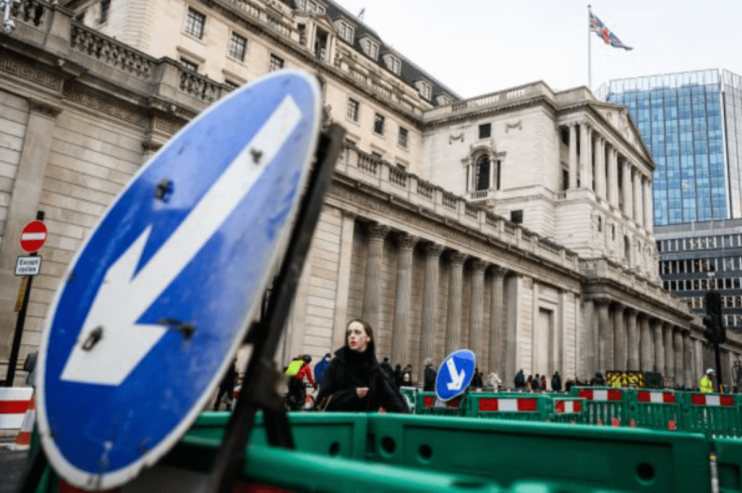
Over the next couple of weeks, the latest batch of data about the UK economy will be published giving the latest snapshot of how the economy is performing.
On Friday, February’s GDP figures will be published with economists expecting a slight expansion. Labour market, inflation and retail sales figures will be published next week which will give policymakers at the Bank of England a lot to think about.
But before the next round of data comes in, let’s have a look at where the UK economy currently stands.
GDP
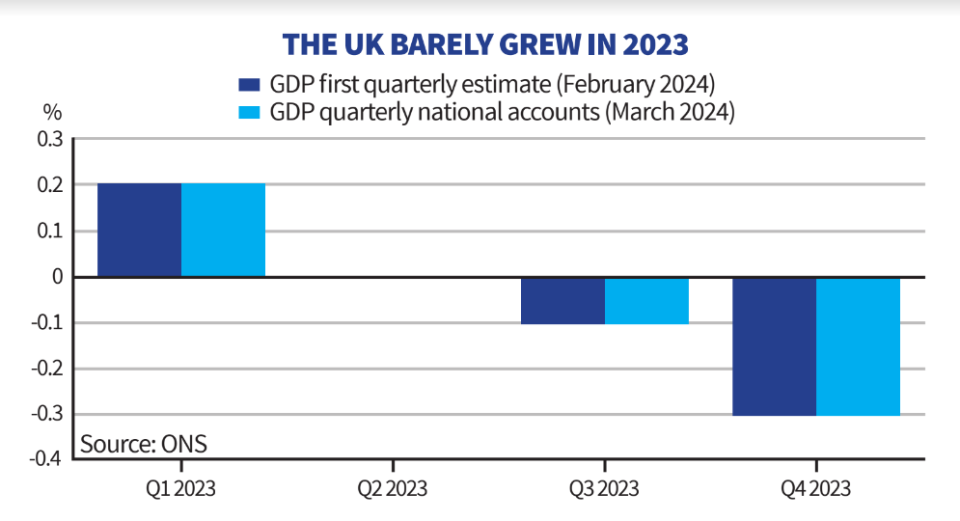
The great challenge for the UK economy is to restore some degree of growth following a very sluggish 2023.
According to the Office for National Statistics (ONS), the economy grew just 0.1 per cent. This makes 2023 the weakest year for the UK since the financial crisis, excluding the pandemic.
Many economists are hopeful that 2024 will be a better year, fuelled by lower interest rates and falling inflation.
The economy returned to growth in January, notching a 0.2 per cent expansion. The big question now is whether this trend will continue or even accelerate.
PMI
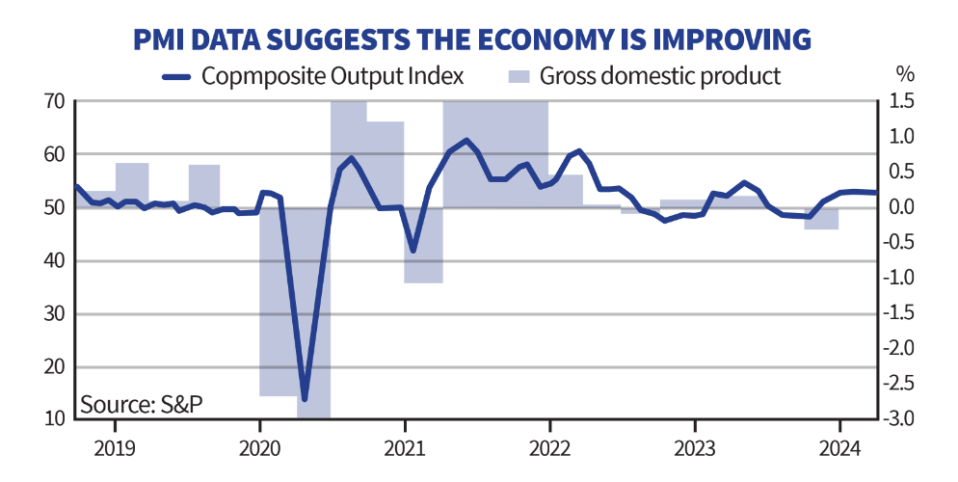
Business surveys suggest the recovery has further to run. In February, S&P’s PMI came in at 53.0 – a nine-month high. Although this dipped slightly to 52.8 in March, it still meant the UK economy was comfortably above the 50-no change mark.
New business received in both the manufacturing and services sectors increased for the fourth consecutive month, although at a slightly slower rate than in January.
“The PMI has been a surprisingly reliable predictor of GDP over the past six to nine months,” Ashley Webb, assistant economist at Capital Economics, said. He suggested the survey data was compatible with a 0.2 per cent expansion in the first quarter.
Confidence
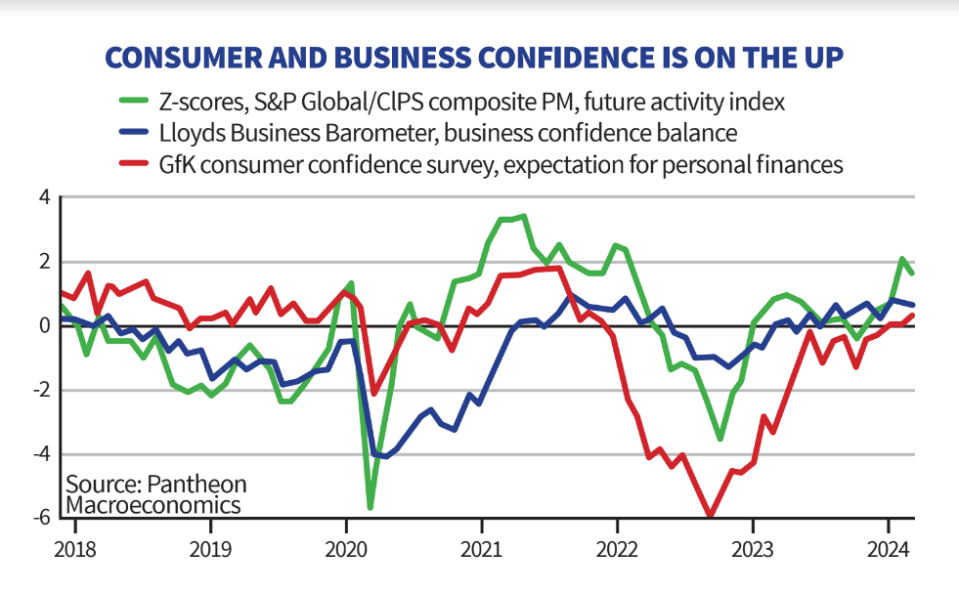
Confidence among both firms and consumers has climbed at the beginning of the year reflecting the improved economic outlook.
Lloyds Bank’s business barometer showed corporate confidence in March was equal to the most optimistic point of last year. One factor driving the improvement in business confidence in the first few months of 2024 was reduced concern about supply chain disruption.
Consumer confidence meanwhile hit its highest level in two years in January, according to GfK. Since then it has fallen very slightly – but remains high compared to the recent past.
Confidence in personal finances for the year ahead rose two points in March, taking it to its highest score since December 2021.
Inflation
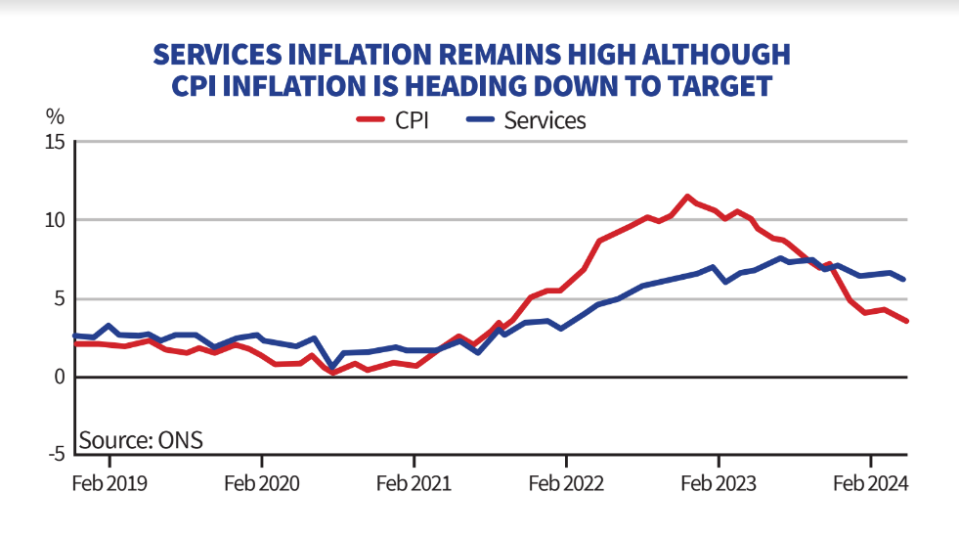
The rapid fall in inflation has been the key driver behind the improving economic picture. The headline rate has fallen to just 3.4 per cent with inflation expected to drop below two per cent in April.
But the Bank of England is more worried about services inflation, which is the most important measure of domestic inflationary pressures. There has been much less progress on services inflation over the past few months.
In February’s figures, services inflation dropped to 6.1 per cent from 6.5 per cent. Policymakers are concerned that strong wage growth could keep services inflation elevated for some time to come.
Labour market
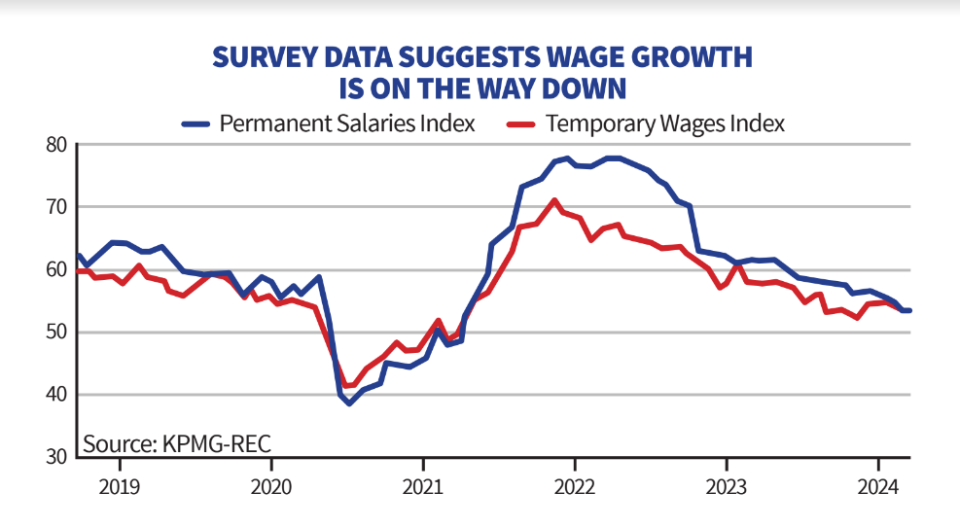
Wage growth stands at nearly six per cent. Unemployment, meanwhile, remains very low in the UK, at just 3.9 per cent. Given these facts, caution over lowering interest rates seems justified.
However, there are serious question marks over whether the unemployment rate is accurate. More timely survey data suggests the labour market is easing far more quickly than official statistics suggest.
According to a jobs survey from KPMG and the Recruitment and Employment Confederation, starting salary inflation dropped to its lowest point in over three years.
Rob Wood, chief UK economist at Pantheon Macroeconomics, said the survey signals “a loose – not just loosening – labour market”.
The survey “screams that the MPC should cut rates quickly”, he added.